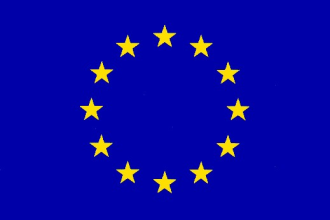Technical Barriers to Trade (TBT) measures encompass a range of regulations and standards that countries implement to protect human health, safety, and the environment, but which can also have the unintended effect of creating trade barriers. These measures are often put in place to address legitimate concerns, but they can pose challenges and obstacles for businesses seeking to engage in international trade.
One common technical barrier to trade is the establishment of product standards and certifications. These standards are intended to ensure that products meet certain quality and safety requirements. However, they can vary from country to country, making it difficult for exporters to comply with multiple sets of regulations. The need to conform to different standards can result in increased costs and time-consuming procedures, effectively impeding trade.
Another significant technical barrier is related to testing and certification procedures. Countries may require imported goods to undergo rigorous testing and verification processes to ensure compliance with local regulations. This can burden exporters with additional expenses and delays, particularly if they must repeat tests that have already been conducted in their home market. Harmonising testing and certification procedures across nations can help reduce these barriers and facilitate smoother trade flows.
Labelling and packaging requirements also pose challenges for international trade. Countries often have specific rules regarding product labelling, including language requirements, nutritional information, and warning labels. Compliance with multiple labelling standards can be burdensome for exporters, especially small and medium-sized enterprises (SMEs) with limited resources. Streamlining and harmonising labelling requirements could simplify trade procedures and increase market access for businesses.
Furthermore, customs procedures and administrative formalities can act as technical barriers to trade. Delays at borders due to inefficient customs processes can increase costs and disrupt supply chains. Simplifying and automating customs procedures through the adoption of electronic systems can help reduce bottlenecks and facilitate trade.
Additionally, intellectual property rights (IPR) protection can also be considered a technical barrier to trade. Some countries require stringent IPR standards, which can make it harder for businesses to sell their products in those markets. Striking a balance between protecting intellectual property and promoting trade can be challenging, but it is essential to foster innovation and facilitate the flow of goods and services.
Compliance with technical barriers to trade measures involves several steps that businesses need to undertake. These steps may vary depending on the specific requirements of the regulatory framework and the product being traded. Here are some general steps often taken to comply with technical barriers to trade measures:
-
Research and understand the regulations: Businesses should thoroughly study the technical regulations, standards, and requirements of the target market or markets. They need to identify the specific measures applicable to their products to ensure compliance.
-
Assess product conformity: Determine whether the product meets the necessary technical standards and requirements. This may involve testing, documentation review, or certification by accredited bodies to demonstrate compliance.
-
Adapt product design and production processes: If the product falls short of the required standards, businesses may need to modify its design, manufacturing processes, or materials to meet the specific technical requirements. This may involve conducting additional testing or seeking expert advice.
-
Obtain necessary certifications: Depending on the regulations, businesses may need to obtain certifications or approvals from designated authorities or third-party organisations. These certifications could be related to product safety, quality, environmental impact, or other specific requirements.
-
Implement labelling and packaging compliance: Ensure that the product's labelling and packaging meet the prescribed requirements, such as language specifications, warnings, ingredient lists, or environmental symbols. Adhering to accurate and complete product information is crucial for compliance.
-
Documentation and record-keeping: Maintain comprehensive documentation that demonstrates compliance with technical barriers to trade measures. This may include test reports, conformity statements, certificates, or other relevant documentation to substantiate conformity with the regulations.
-
Monitor and update compliance: Regularly monitor any changes or updates to the technical barriers to trade measures. Stay informed about evolving regulations, standards, or new requirements that may affect the product and adjust compliance efforts accordingly.
-
Collaborate with experts and industry networks: Engage with consultants, trade associations, industry experts, or chambers of commerce that can provide guidance on technical regulations and compliance best practices. Collaboration and knowledge sharing within industry networks can help businesses navigate complex compliance landscapes.
-
Seek professional assistance if needed: If the requirements are highly complex or if the business lacks internal expertise, it may be beneficial to seek assistance from specialised trade compliance consultants or legal professionals who specialise in technical barriers to trade measures.
-
Maintain transparent communication: Establish effective communication channels with importers, distributors, and relevant authorities in the target market. Transparency and open dialogue can help address any concerns or inquiries related to compliance and facilitate smoother trade operations.
By following these steps to comply with technical barriers to trade measures, businesses can minimise trade obstacles and ensure their products meet the necessary regulatory requirements, thereby improving market access and fostering international trade relationships.
In conclusion, technical barriers to trade encompass a wide range of measures that countries employ to safeguard various interests. While these measures serve important objectives, they can inadvertently impede international trade. Addressing these barriers requires enhanced cooperation, standardisation, simplification of customs procedures, and effective harmonisation of regulations. By finding the right balance between regulatory requirements and facilitating trade, countries can promote economic growth, encourage innovation, and create a favourable environment for international business activities.


